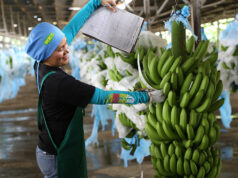PHILIPPINE dairy imports are expected to decline this year due to weak demand as a result of the coronavirus disease 2019 (COVID-19) pandemic, the United States Department of Agriculture (USDA) said.
In a report, the USDA Foreign Agricultural Service said Philippine dairy imports in 2020 are projected to decline to 2.80 million metric tons (MT) in liquid milk equivalent due to a weak demand for dairy products during the crisis.
The USDA said 41% of the country’s total dairy imports consist of skim milk powder and whole milk powder.
In the six months to June, skim milk powder imports totaled 627,430 MT in liquid milk equivalent, while whole milk imports were estimated at 117,110 MT.
“While up in value, the said imports will likely decline in volume due to rising global dairy prices and tepid demand for dairy products,” the USDA said.
New Zealand accounts for about 37% of dairy imports, followed by the US at 31% and Australia 5%.
“Based from the National Dairy Authority (NDA), the Philippines imports virtually all of its dairy products, especially milk powder, as domestic production cannot meet the country’s dairy demand of nearly 3 million MT liquid milk equivalent per year,” the USDA said.
The USDA noted that the value of US dairy exports to the Philippines rose 11% in 2019 to $273 million, but fell 7% by volume amid higher dairy prices.
US dairy export products include non-fat dry milk powder, buttermilk, and dried whey.
Despite lower volumes for the year, the USDA projected Philippine dairy imports for 2021 to increase as the economy bounces back and purchasing power increases.
“Dairy imports are forecast to increase marginally as economic activity starts to recover and as COVID-19 outbreaks are contained,” the USDA said.
The USDA said the Philippines produces less than 1% of its dairy requirements.
Domestic milk production is estimated to hit 26,000 MT in 2020 and around 26,500 MT in 2021, due to improved dairying capability and the implementation of new development projects.
“Around 65% of total milk produced is cow’s milk, while the rest is carabao milk at 31% and goat milk at 4%,” the USDA said. — Revin Mikhael D. Ochave



